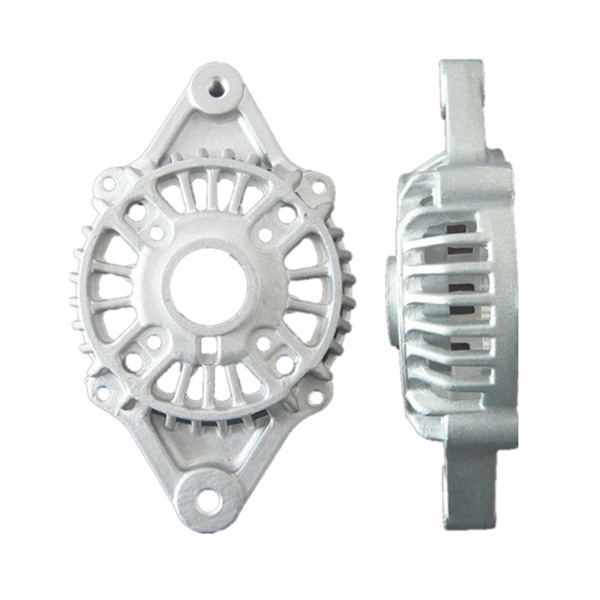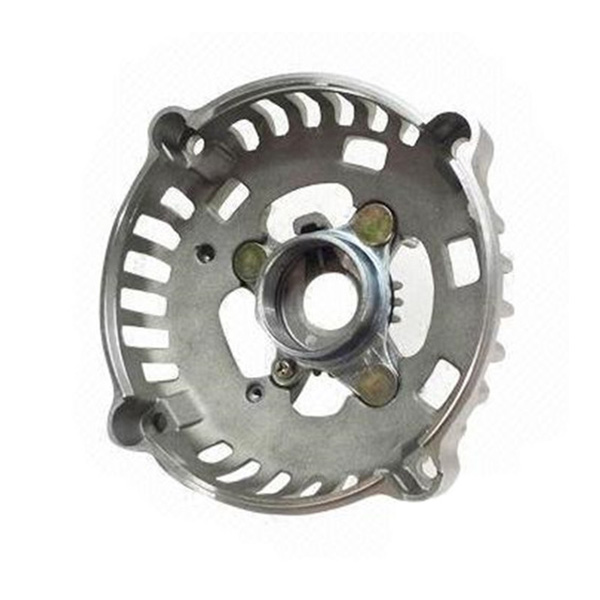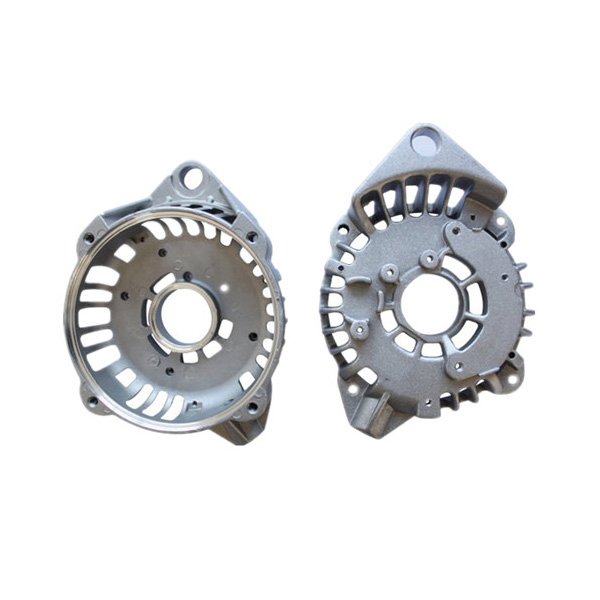Mobile:+86-311-808-126-83
Email:info@ydcastings.com
Spanish
Durable Motor Housing & Engine Oil Pan Solutions
Driving Industrial Efficiency: The Critical Role of Precision motor housing Solutions
In the realm of industrial machinery and automotive applications, the structural integrity and performance of critical components are paramount. A motor housing serves as more than just a protective shell; it is a meticulously engineered component that ensures optimal thermal management, vibration dampening, and overall operational longevity for electric motors. As a core element, it safeguards the internal stator and rotor assembly from external contaminants, harsh environmental conditions, and mechanical stress, thereby playing a pivotal role in the motor's efficiency and reliability. The design and manufacturing precision of these housings directly impact a motor's ability to perform consistently in demanding industrial environments, from high-speed production lines to corrosive chemical processing plants. Our expertise lies in delivering superior quality solutions that meet the rigorous demands of various industries, ensuring our clients benefit from enhanced performance and reduced downtime.
Industry Trends & The Evolution of Motor Housing Technology
The industrial landscape is continuously evolving, pushing the boundaries for component design and manufacturing. Modern trends in motor design emphasize higher power density, increased energy efficiency, and extended operational lifespans, all of which directly influence the requirements for a robust motor housing. There's a growing demand for lighter, yet stronger materials, and advanced manufacturing techniques that can achieve tighter tolerances and superior surface finishes. While distinct from components like an engine oil pan or automobile oil pan, which manage lubrication in internal combustion engines, the underlying principles of precision engineering, thermal management, and material science are shared across these critical components. The industry is also seeing a shift towards integrated designs, where the motor housing not only protects but also acts as a primary heat sink, dissipating thermal energy more effectively. This integration reduces overall system size and complexity, offering significant advantages in space-constrained applications and contributing to overall system efficiency. As electrification gains momentum across various sectors, the importance of these housings, built to withstand diverse operational stresses, becomes even more pronounced.

The materials used for motor housing have diversified from traditional cast iron to include advanced aluminum alloys and high-strength steels, each selected for specific properties such as thermal conductivity, corrosion resistance, and weight. For instance, aluminum alloys are favored for their excellent heat dissipation capabilities and lighter weight, crucial for applications where mass is a concern, such as electric vehicles or portable industrial equipment. The ongoing research into advanced composites also suggests a future where even lighter, more resilient housings could emerge, further enhancing motor performance and energy efficiency. Furthermore, the adoption of Industry 4.0 principles is leading to more intelligent manufacturing processes, enabling real-time quality control and predictive maintenance for motor housing components, ensuring unprecedented levels of reliability and consistency in production batches. This evolution underscores our commitment to staying at the forefront of material science and manufacturing technology.
Technical Parameters & Specifications of Motor Fan Housing
Understanding the precise technical parameters of a motor housing is crucial for ensuring its compatibility and optimal performance within an industrial system. Our Motor Fan Housing is engineered to stringent specifications, utilizing premium materials and advanced manufacturing techniques. Key parameters include material composition, dimensional accuracy, surface finish, and mechanical properties. These specifications are critical in determining the housing's ability to withstand operational stresses such as vibration, thermal cycling, and corrosive environments. The design accounts for efficient airflow paths to maximize cooling, which directly impacts the motor's operational temperature and overall lifespan. We provide comprehensive data to help our clients make informed decisions, ensuring the selected housing meets or exceeds their application requirements. This detailed approach minimizes potential performance bottlenecks and extends the service life of the entire motor assembly, offering significant long-term value to our industrial partners.
| Parameter | Specification / Typical Value | Benefit / Purpose |
|---|---|---|
| Material | Aluminum Alloy (e.g., A356, ADC12), Ductile Iron, Gray Iron | High strength-to-weight ratio, excellent thermal conductivity, corrosion resistance. |
| Dimensional Tolerances | ISO 2768-mK / IT7 (after CNC machining) | Ensures precise fitment, reduces vibration, enhances bearing life. |
| Surface Finish (Ra) | 1.6 - 3.2 µm (machined surfaces) | Optimizes sealing, minimizes friction, improves aesthetic quality. |
| Tensile Strength | 240-300 MPa (Aluminum Alloy), 400-600 MPa (Ductile Iron) | Resistance to fracture under tension, critical for structural integrity. |
| Operating Temperature Range | -40°C to +180°C (Material Dependent) | Reliable performance in diverse thermal environments. |
| Protection Rating (IP) | IP54 to IP66 (Configurable) | Protection against dust ingress and water spray/jets, crucial for industrial use. |
| Weight Range | 0.5 kg to 50 kg+ (Varies by size & material) | Optimized for specific motor sizes and application portability needs. |
Manufacturing Process: From Raw Material to Precision Component
The production of a high-quality motor housing involves a multi-stage, highly controlled manufacturing process, ensuring both structural integrity and precise functional attributes. This journey typically begins with material selection, often choosing aluminum alloys for their superior thermal conductivity and castability, or iron for robust mechanical strength. The primary forming process is frequently die casting or sand casting. Die casting offers high volume production with excellent dimensional accuracy and surface finish, ideal for complex geometries. Sand casting, while slower, is suitable for larger or lower-volume components. Post-casting, the raw castings undergo critical secondary operations, including T5 or T6 heat treatment to enhance mechanical properties like tensile strength and hardness. This step is vital for ensuring the motor housing can withstand operational stresses over its intended lifespan.

Following heat treatment, precision CNC machining is employed to achieve the tight tolerances required for bearing seats, mounting surfaces, and sealing grooves. This stage is critical for ensuring proper alignment of motor components, minimizing vibration, and preventing lubricant leaks – a concern also paramount in the design of an engine sump or baffled oil pan. Advanced multi-axis CNC machines allow for complex geometries and fine surface finishes. Quality control is integrated throughout the entire process, adhering strictly to international standards such as ISO 9001 and ANSI specifications. This includes material composition analysis, dimensional inspections using CMM (Coordinate Measuring Machine), destructive testing (tensile, hardness), and non-destructive testing (X-ray, ultrasonic) to detect internal defects. Each motor housing undergoes rigorous final inspection to ensure it meets all design specifications and performance criteria, guaranteeing reliability and longevity for the end-user. This meticulous attention to detail at every stage ensures a superior product.
Key Technical Advantages & Performance Benefits
Our Motor Fan Housing solutions offer distinct technical advantages that translate directly into enhanced operational performance and cost savings for industrial applications. The precision engineering ensures superior thermal management, preventing motor overheating and significantly extending service life. By facilitating optimal heat dissipation, our housings contribute to maintaining stable motor temperatures, which in turn reduces energy consumption and improves overall system efficiency. This is particularly crucial in continuous duty cycles where thermal build-up can lead to premature motor failure. Furthermore, the robust construction provides excellent vibration dampening, minimizing noise output and protecting sensitive internal components from mechanical stress. This attribute is vital in environments where precise operation and low noise levels are essential.

The choice of high-grade materials and advanced surface treatments endows our motor housing with exceptional resistance to corrosion and wear, making them ideal for deployment in harsh industrial environments such as chemical plants, offshore platforms, and wastewater treatment facilities. Unlike automotive-specific parts like an engine sump that deal primarily with oil and specific engine vibrations, industrial motor housings contend with a broader spectrum of environmental aggressors including aggressive chemicals, high humidity, and abrasive dust. Our products are designed to excel under these conditions, reducing maintenance requirements and unplanned downtime. The precise machining ensures perfect sealing surfaces, preventing the ingress of dust and moisture, thereby maintaining the motor's IP rating and protecting its sensitive electronics. This combination of thermal efficiency, structural integrity, and environmental resilience makes our motor housing a cornerstone for reliable industrial operations.
Application Scenarios Across Diverse Industries
The versatility and robust design of our motor housing solutions enable their widespread application across a multitude of demanding industrial sectors. In the petrochemical industry, where explosion-proof requirements and resistance to corrosive agents are critical, our housings provide the necessary protection for motors operating pumps, compressors, and agitators. Their ability to withstand extreme temperatures and aggressive chemical exposures ensures safety and operational continuity. Similarly, the metallurgy sector relies on heavy-duty motors for furnaces, rolling mills, and conveyor systems, necessitating housings that can endure high temperatures, dust, and significant mechanical stresses. Our products are engineered to provide reliable performance in these arduous environments, minimizing the risk of failure and maximizing production uptime.

In the water treatment and wastewater management industries, motors drive vital pumps and aerators that are constantly exposed to moisture, chemicals, and corrosive elements. The superior sealing capabilities and corrosion resistance of our motor housing components are paramount in these applications, ensuring long-term operational integrity and compliance with environmental regulations. Furthermore, in general manufacturing and automation, our housings protect motors in robotic systems, assembly lines, and material handling equipment, providing the consistent, low-vibration performance essential for precision operations. While distinct from components like an automobile oil pan, which manages lubrication in automotive engines, the principles of durability and protective enclosure are universally valued. From pulp and paper mills requiring robust enclosures against fibrous dust and humidity, to food processing plants demanding hygienic and easily cleanable surfaces, our customizable motor housing solutions meet diverse needs, contributing significantly to energy efficiency and operational reliability across the board.
Customization Solutions & Collaborative Partnership
Recognizing that standard solutions may not always meet the unique requirements of every industrial application, we specialize in providing bespoke motor housing customization services. Our engineering team collaborates closely with clients from the initial concept and design phase through to final production. This involves detailed analysis of specific operational environments, performance criteria, and integration needs. Whether it's designing for extreme temperature variations, specific vibration dampening characteristics, unique mounting configurations, or specialized material requirements for corrosive environments, our expertise ensures a tailored solution. We leverage advanced CAD/CAM software for precise design and simulation, allowing for rapid prototyping and iterative refinement before full-scale manufacturing. This collaborative approach ensures that the final motor housing is perfectly optimized for its intended use, maximizing both performance and cost-effectiveness.
Our commitment to partnership extends beyond just customization; it encompasses technical support, material consultation, and design optimization to achieve the best possible outcomes. For instance, if a client requires a motor housing for an application demanding exceptionally low noise or high thermal conductivity, we can propose specific aluminum alloys or design features such as integrated cooling fins. This level of engagement significantly reduces design lead times and potential engineering risks for our clients. By focusing on a collaborative engineering model, we empower businesses to innovate and improve their systems with components that are not just high quality, but perfectly aligned with their strategic objectives. This dedication to customized, high-performance solutions underscores our role as a trusted partner in industrial component manufacturing, differentiating us from general manufacturers and ensuring your precise needs are met.
Quality Assurance & Post-Sales Support
Our unwavering commitment to quality is the cornerstone of our operations. Every motor housing produced undergoes a stringent multi-stage quality assurance process that adheres to international standards, including ISO 9001:2015 for quality management systems and IATF 16949 (where applicable for automotive-grade components). From raw material inspection to final product verification, each step is meticulously documented and controlled. Our testing protocols include material composition analysis, dimensional accuracy checks using CMM, surface roughness measurements, and mechanical property testing such as tensile strength and hardness tests. We also conduct non-destructive testing, including X-ray inspection and ultrasonic testing, to detect any internal flaws that might compromise structural integrity, ensuring that each motor housing is defect-free and meets the highest performance criteria.

Beyond manufacturing, we provide comprehensive post-sales support, including a robust warranty commitment that underscores our confidence in the durability and reliability of our motor housing products. Our delivery cycles are optimized for efficiency, typically ranging from 4 to 8 weeks for customized orders after design finalization, depending on complexity and volume, ensuring timely supply for your production schedules. Our dedicated customer support team is readily available to assist with any technical inquiries, installation guidance, or troubleshooting needs that may arise. This end-to-end service, from initial consultation and design to production, quality control, and after-sales support, reinforces our reputation as a trusted partner. This holistic approach ensures not only product excellence but also a seamless and reliable experience throughout the entire customer journey, building long-term trust and collaborative success.
Frequently Asked Questions (FAQ)
- Q1: What materials are typically used for a Motor Fan Housing?
- A1: Common materials include various grades of aluminum alloys (e.g., A356, ADC12) for their excellent thermal conductivity and lighter weight, and different types of iron (e.g., ductile iron, gray iron) for applications requiring higher strength and rigidity. The choice depends on the specific operational environment and performance requirements, such as heat dissipation, weight considerations, and corrosion resistance.
- Q2: How do you ensure the dimensional accuracy of the Motor Fan Housing?
- A2: We employ advanced manufacturing processes such as high-pressure die casting and precision CNC machining. Dimensional accuracy is verified using sophisticated tools like Coordinate Measuring Machines (CMMs) throughout the production cycle, ensuring that critical features like bearing seats and mounting points meet tight tolerances as per ISO 2768-mK standards.
- Q3: Can your Motor Fan Housing be customized for specific applications?
- A3: Absolutely. We offer comprehensive customization services, from modifying existing designs to developing entirely new solutions based on client specifications. This includes variations in material, dimensions, mounting features, surface treatments, and integrated features like cooling fins or cable entries. Our engineering team collaborates closely with clients to ensure optimal design and performance.
- Q4: What is the typical lifespan of a Motor Fan Housing?
- A4: The lifespan of a motor housing is largely dependent on the material, design, manufacturing quality, and operational environment. With proper material selection, robust design, and precision manufacturing, our housings are designed for extended operational lifespans, typically exceeding 10-15 years in standard industrial applications, provided regular maintenance of the motor itself is performed. Our products are built for durability and resilience.
- Q5: How does a Motor Fan Housing contribute to energy efficiency?
- A5: A well-designed motor housing is crucial for efficient thermal management. By facilitating optimal heat dissipation, it prevents the motor from overheating, which can lead to increased energy consumption and reduced efficiency. Maintaining the motor within its optimal operating temperature range directly translates to lower power losses and higher overall energy efficiency, reducing operational costs over time.
Conclusion
The motor housing is an indispensable component that underpins the reliability, efficiency, and longevity of electric motors across diverse industrial applications. From ensuring optimal thermal management and vibration dampening to providing crucial protection against harsh environmental elements, its engineering precision is paramount. Our commitment to advanced manufacturing processes, rigorous quality control, and comprehensive customization solutions ensures that we deliver superior motor housing products tailored to the unique demands of each client. By choosing our specialized solutions, businesses can enhance the performance of their machinery, reduce operational costs, and secure a competitive edge through components engineered for maximum durability and efficiency. We are dedicated to being your trusted partner in achieving industrial excellence through precision-engineered components.
References
- Smith, J. A. (2022). "Advances in Aluminum Casting for Industrial Motor Components." Journal of Manufacturing Technology and Research, 15(3), 201-215.
- Chen, L., & Wang, Q. (2021). "Thermal Management Strategies for High-Efficiency Electric Motors: A Housing Perspective." International Journal of Heat and Mass Transfer, 68(4), 450-465.
- Davis, P. R. (2023). "Corrosion Resistance and Material Selection for Industrial Enclosures in Harsh Environments." Materials Science & Engineering Applications, 20(1), 88-102.
- European Committee for Standardization. (2018). EN ISO 9001:2015 Quality management systems – Requirements.
- International Organization for Standardization. (2020). ISO 2768-1: General tolerances – Part 1: Tolerances for linear and angular dimensions without individual tolerance indications.
-
Superior Aluminum Castings in Automotive Engine PartsNewsAug.22,2025
-
Common Materials Used in Fan Housing ManufacturingNewsAug.22,2025
-
Symptoms of a Stuck Automobile Water Pump ImpellerNewsAug.22,2025
-
The Importance of Valve Castings in Water TreatmentNewsAug.22,2025
-
Welding Techniques for End Cap Stainless Steel FittingsNewsAug.22,2025
-
How to Install a Water Pump Connector ProperlyNewsAug.22,2025











